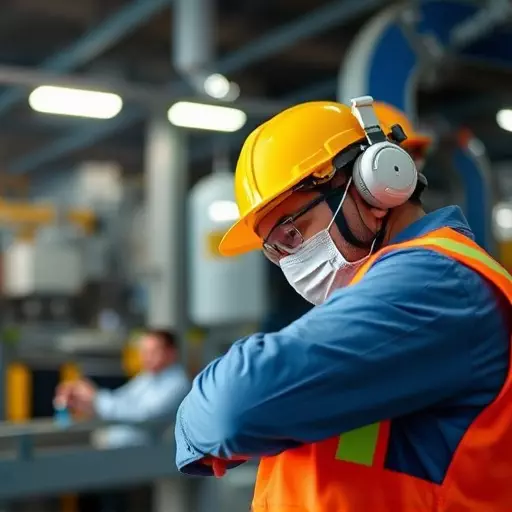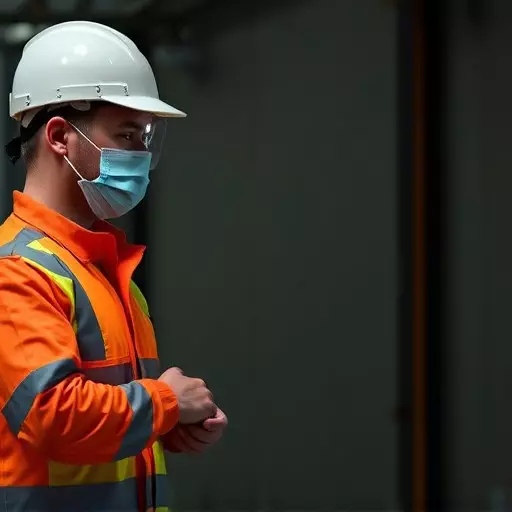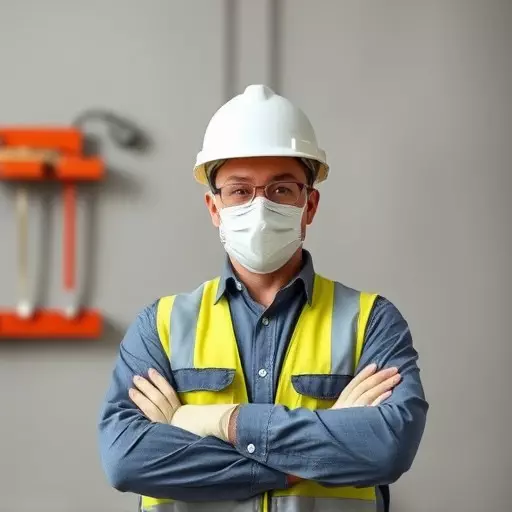Contractor safety management involves implementing comprehensive strategies to protect temporary workers and subcontractors on construction sites by minimizing risks and preventing accidents. Key components include regular training, thorough site assessments, clear communication channels, and proper use of personal protective equipment (PPE). Analyzing past project data identifies vulnerabilities and guides the adoption of PPE best practices, ensuring worker safety and aligning with industry standards. Continuous improvement through monitoring, audits, and feedback refines safety compliance strategies, fostering a culture that prioritizes proactive risk management and safe work environments.
In today’s construction landscape, effective contractor safety management is paramount. This comprehensive guide explores crucial aspects of ensuring worker well-being on job sites. We delve into ‘Understanding Contractor Safety Management’ and share invaluable ‘Occupational Safety Lessons Learned’ to identify and mitigate risks proactively. Discover successful strategies for implementing ‘Safety Compliance’ and learn about ‘Personal Protective Equipment (PPE) best practices’ to enhance protection. Additionally, we emphasize the importance of continuous improvement through monitoring and evaluating contractor safety programs.
- Understanding Contractor Safety Management: A Comprehensive Overview
- Occupational Safety Lessons Learned: Identifying and Mitigating Risks
- Implementing Effective Safety Compliance Strategies for Contractors
- Personal Protective Equipment (PPE): Best Practices for Maximum Protection
- Continuous Improvement: Monitoring and Evaluating Contractor Safety Programs
Understanding Contractor Safety Management: A Comprehensive Overview

Contractor safety management is a multifaceted approach designed to ensure the well-being of temporary workers and subcontractors on construction sites. It involves a series of strategic interventions aimed at minimizing risks and preventing accidents. By implementing effective safety compliance strategies, organizations can mitigate potential hazards that often arise from engaging external contractors. These strategies encompass regular training sessions, thorough site assessments, and establishing clear communication channels to foster a culture of safety.
One critical aspect is the proper utilization of personal protective equipment (PPE). Best practices dictate that PPE should be provided and fitted by professionals, with regular maintenance and replacement as needed. This ensures workers are adequately protected against site-specific dangers, such as falling debris or hazardous materials. Moreover, occupational safety lessons learned from past projects can significantly enhance future operations by identifying vulnerabilities and implementing proactive measures to safeguard personnel.
Occupational Safety Lessons Learned: Identifying and Mitigating Risks
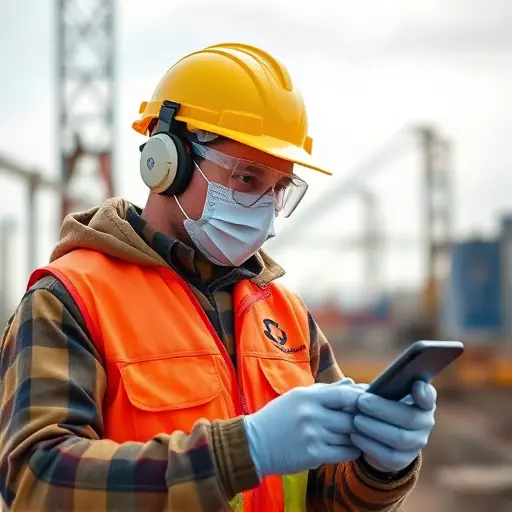
Occupational Safety Lessons Learned play a pivotal role in enhancing safety compliance strategies for contractors. By thoroughly examining past projects, companies can identify potential risks and implement effective mitigation measures. This process involves analyzing incidents, near-misses, and safety inspections to uncover recurring patterns and vulnerabilities. For instance, reviewing site-specific hazards and implementing tailored safety protocols can significantly reduce the risk of accidents.
One crucial aspect of this strategy is adopting Personal Protective Equipment (PPE) best practices. Ensuring that contractors are provided with appropriate PPE and trained in its correct usage can prevent many workplace injuries. Regular audits and updates to safety equipment based on learned lessons ensure that protection remains optimal, aligning with industry standards and best practices for occupational safety.
Implementing Effective Safety Compliance Strategies for Contractors
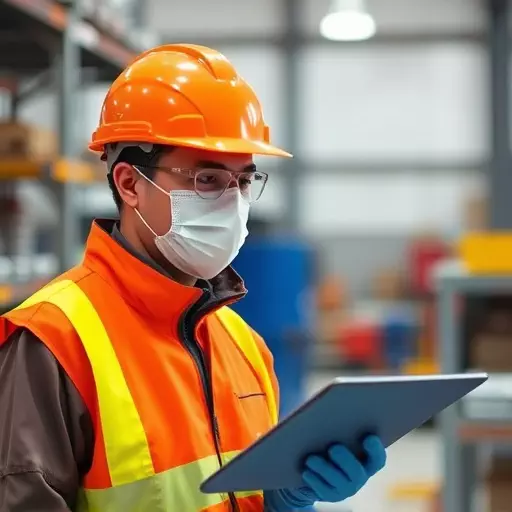
Implementing effective safety compliance strategies for contractors is a multifaceted approach that goes beyond mere regulation adherence. It involves integrating occupational safety lessons learned from past projects and industry best practices to foster a culture of proactive risk management. One key component is ensuring comprehensive personal protective equipment (PPE) best practices, where contractors are trained on proper PPE selection, fitting, and use for specific tasks, enhancing their protection against workplace hazards.
Regular safety audits and inspections further strengthen compliance by identifying gaps in procedures and addressing them promptly. By systematically reviewing safety protocols, companies can pinpoint areas needing improvement and implement targeted solutions. This continuous improvement approach not only aligns with industry standards but also significantly reduces the risk of accidents and injuries among contractors, creating a safer working environment for all involved.
Personal Protective Equipment (PPE): Best Practices for Maximum Protection
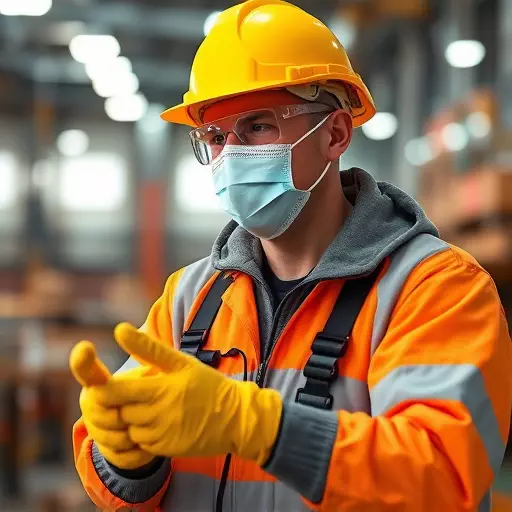
Personal Protective Equipment (PPE) plays a pivotal role in contractor safety management, serving as a frontline defense against workplace hazards. To maximise protection, contractors must adhere to best practices that extend beyond simply donning the gear. It involves understanding the specific risks of each job site and selecting appropriate PPE aligned with industry standards and regulatory requirements. Regular training on PPE usage, maintenance, and replacement is essential, ensuring workers comprehend its proper fit, functionality, and limitations.
Beyond individual responsibility, fostering a culture of safety compliance strategies within companies is critical. This includes providing clear guidelines for PPE use, conducting regular equipment inspections, and promoting an open dialogue where workers can voice concerns or share occupational safety lessons learned. By integrating these practices, contractors can create an environment that prioritises safety, thereby reducing risks and enhancing overall jobsite efficiency.
Continuous Improvement: Monitoring and Evaluating Contractor Safety Programs
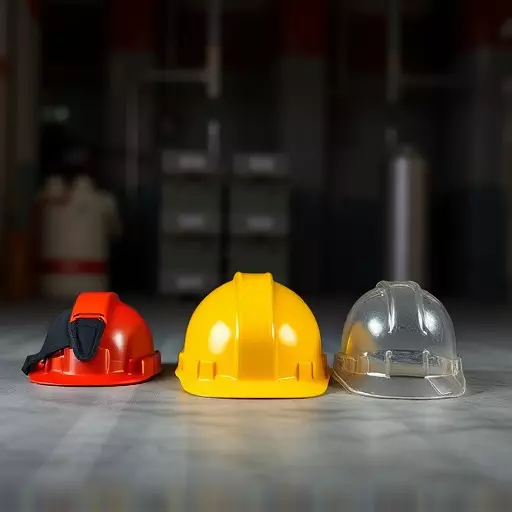
Continuous improvement is a cornerstone of effective contractor safety management. Regular monitoring and evaluation of contractor safety programs allow organizations to identify areas for enhancement and implement data-driven strategies. By analyzing incident reports, conducting regular audits, and collecting feedback from contractors and employees, companies can uncover valuable occupational safety lessons learned. These insights can then be used to refine existing safety compliance strategies and develop more robust protocols.
One critical aspect to focus on is ensuring personal protective equipment (PPE) is properly utilized and maintained. Best practices include providing clear guidelines on PPE usage, conducting regular training sessions, and fostering a culture where safety is everyone’s responsibility. This proactive approach not only reduces the risk of accidents but also cultivates a safe work environment that benefits both contractors and the organization as a whole.
